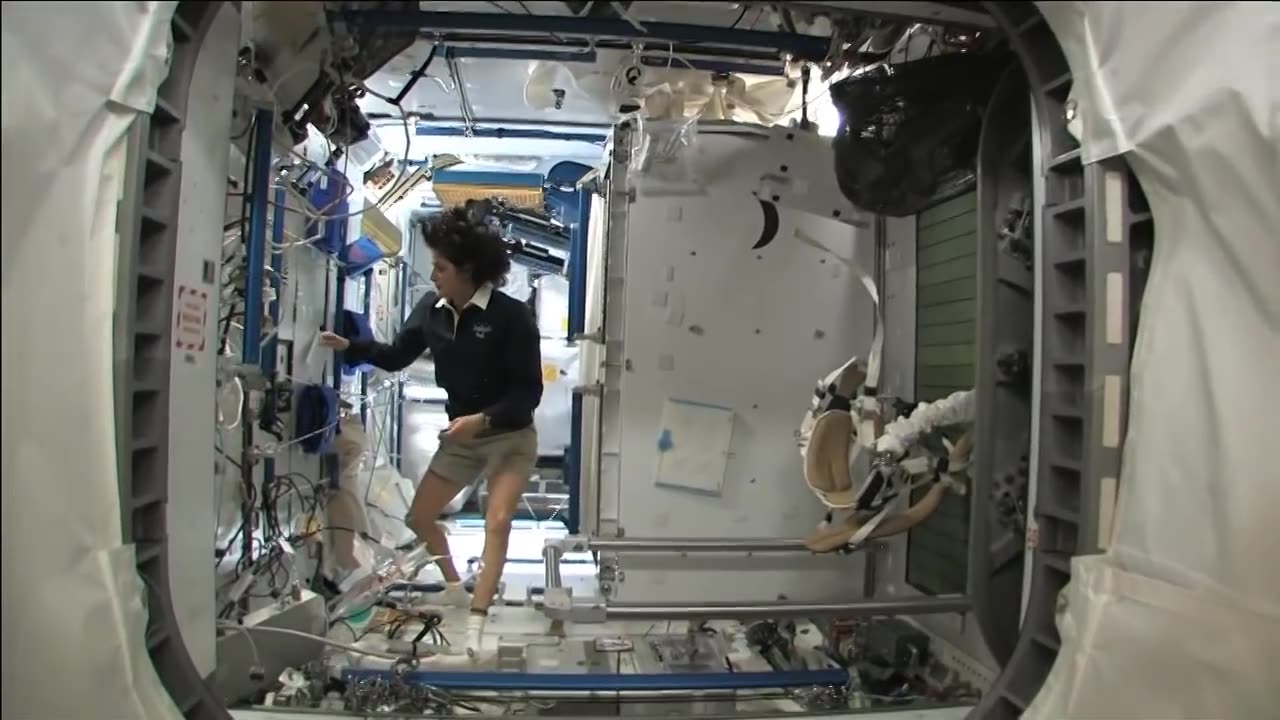Premium Only Content

Station Tour_ Harmony, Tranquility, Unity
The International Space Station (ISS) is a remarkable feat of human engineering and international cooperation, orbiting Earth as a habitable artificial satellite. It serves as a scientific laboratory, a space environment research station, and a symbol of global collaboration in space exploration. The ISS is a modular structure composed of various interconnected modules that were launched into space and assembled in orbit.
Components:
Tranquility Module: Also known as Node 3, this module provides living quarters, a gymnasium, and additional space for scientific research. It includes a large window known as the Cupola that offers breathtaking views of Earth and space.
Harmony Module: Node 2, or Harmony, serves as a central hub connecting various modules of the ISS. It houses life support systems and plays a crucial role in facilitating international collaboration.
Unity Module: Node 1, named Unity, was the first American-built module of the ISS. It connects the Russian and American segments of the station and provides docking ports for visiting spacecraft.
Inside the ISS:
The interior of the ISS is divided into various functional areas, including living quarters, laboratories, research facilities, and workspaces. Astronauts and cosmonauts onboard conduct a wide range of scientific experiments in fields such as biology, physics, astronomy, and materials science. They study the effects of microgravity on human health and perform research to benefit life on Earth and future space missions.
International Space Station Tour:
A guided tour of the ISS showcases its various modules and highlights the areas where crew members live, work, eat, sleep, and exercise. The tour often emphasizes the collaborative effort among nations and the advanced technology that enables sustained human presence in space.
Future of the ISS:
As of my last knowledge update in September 2021, there were discussions about the future of the ISS beyond its original design life, which was expected to be around 2028. Some plans included potential extensions, private sector involvement, and discussions about potentially decommissioning or transitioning the ISS to focus on new ventures in space exploration.
Building a Space Station:
Constructing a space station involves launching and assembling various modules in orbit. These modules are designed to fulfill specific functions, such as living quarters, laboratories, and docking ports. They are launched individually and carefully coordinated to ensure they can be interconnected and secured in space. Precise engineering, launch logistics, and astronaut expertise are essential to building a space station.
Retirement Plans and the Future:
If NASA plans to retire the ISS by 2031, it likely suggests that they are considering transitioning to newer space exploration initiatives. The retirement could involve decommissioning the ISS, focusing on deep-space missions like lunar exploration or Mars missions, or potentially handing over certain operations to private companies. It's important to note that plans can evolve over time, and the specific details would depend on political, financial, and technological factors.
Please note that there may have been developments in the space industry since my last update in September 2021, so I recommend checking more recent and reliable sources for the latest information on the International Space Station and its future.
-
 1:35:07
1:35:07
Man in America
23 hours agoPeptides: Ultimate Health Hack… or Big Pharma Gila Monster POISON? w/ Dr. Diane Kazer
141K57 -
 LIVE
LIVE
MrR4ger
14 hours agoNEW ERA FOR DaD?? - DARK and DARKER * HOW TO DRUID 101* NEW WIPE GUIDE
330 watching -
 LIVE
LIVE
Biscotti-B23
5 hours ago $1.94 earned🔴 LIVE EARLY ACCESS RANKED GRIND ⚽ THE BEST FOOTBALL GAME OUT 💥 REMATCH
115 watching -
 16:18
16:18
Mrgunsngear
13 hours ago $23.43 earnedBlack Aces Tactical S4 Tactical - Benelli M4 Clone But Does It Work?
119K13 -
 32:55
32:55
The Connect: With Johnny Mitchell
1 day ago $5.19 earnedInside America's LARGEST Pot Trafficking Gang: How Florida Fishermen Became #1 Most Wanted Cartel
55.8K11 -
 2:05:15
2:05:15
Right Side Broadcasting Network
15 hours agoLIVE REPLAY: President Trump Attends UFC Fight 314 - 4/12/25
140K15 -
 2:07:42
2:07:42
BlackDiamondGunsandGear
13 hours agoWho’s in Town for This Stream?
79K5 -
 1:24:56
1:24:56
Quite Frankly
23 hours ago"Wild Tales: Crazy Story Hotline" | The Brothers Ep. 1
111K16 -
 12:37
12:37
Tundra Tactical
20 hours ago $6.69 earned🚫🚫 Biden Era GUN CONTROL Gone!!!! 🚫🚫
83K21 -
 1:00:09
1:00:09
Motherland Casino
12 hours ago $7.24 earnedCynthia X Mia
71K7